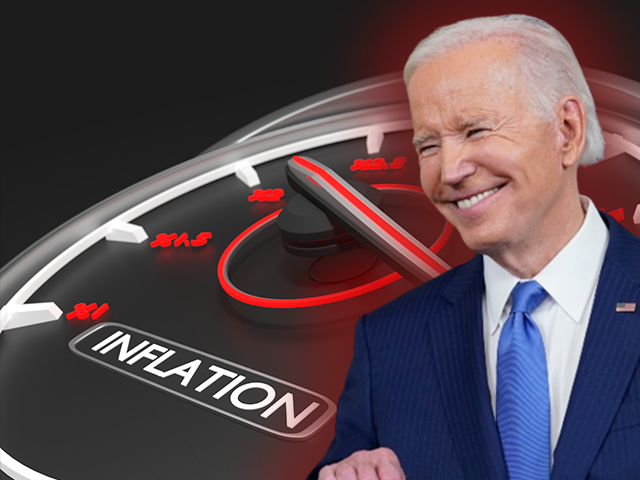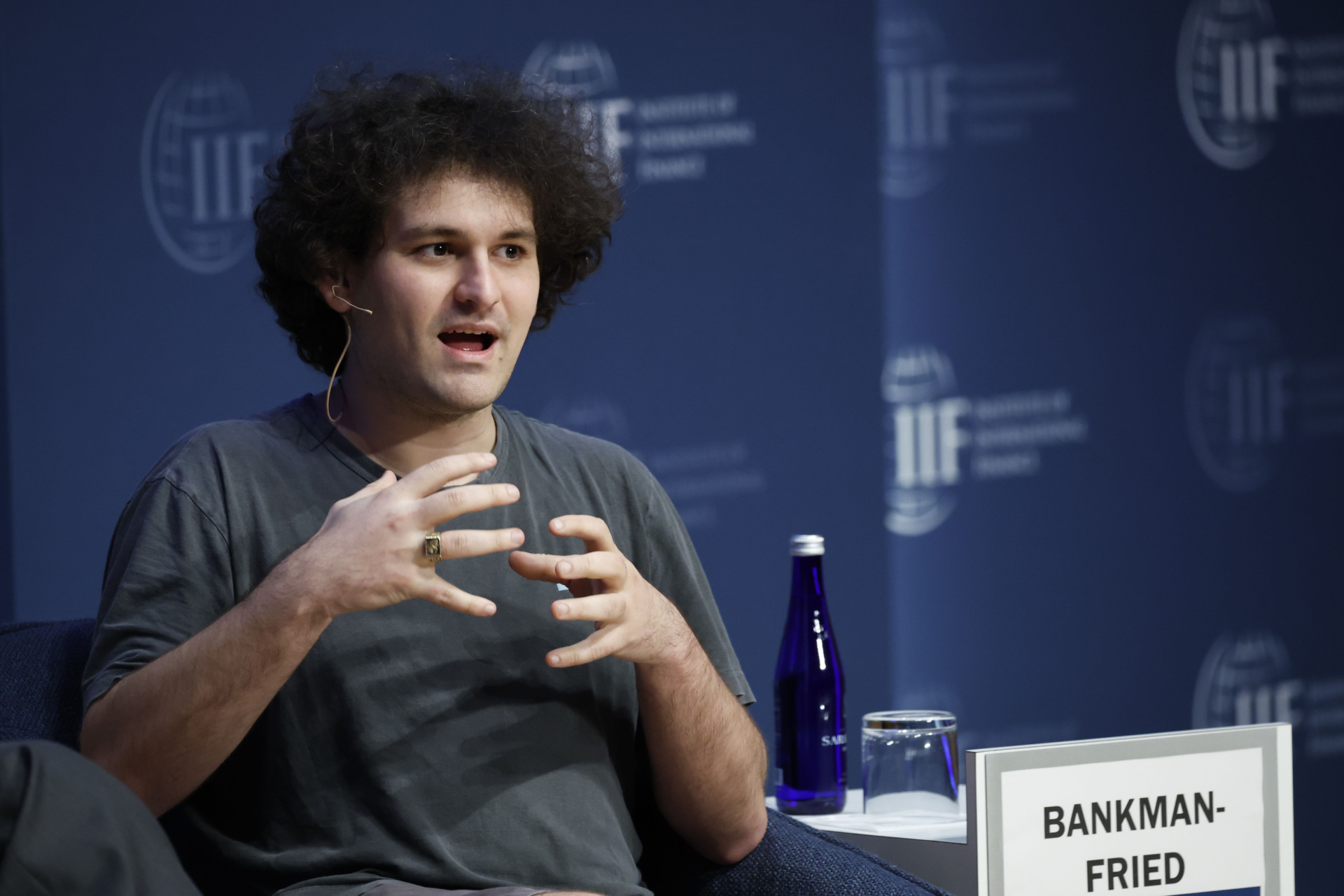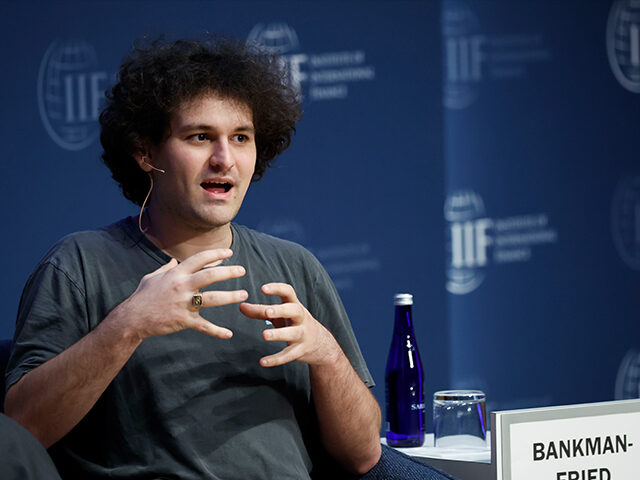“I’m not going to change anything in any fundamental way.”
This was President Joe Biden’s response when asked about the voter rebuke of his administration in the midterm election. That’s clearly bad news for the roughly two-thirds of the country who told exit pollsters that they are dissatisfied or angry about the direction of the country or the 76 percent who say the condition of the economy is either not so good or poor.
Fortunately, it looks like it will not be up to Biden and the Democrats alone to determine if politics in Washington, DC, will change in a fundamental way. As of Thursday, it is increasingly likely that the Republicans will have enough seats to capture the House of Representatives. Even if the GOP does not end up in control of the Senate, a House majority will put them in the position to block attempts at fiscal expansion by the Biden administration, which should help bring down inflation next year.

(Susan Walsh/AP Photo; iStock/Getty Images; BNN)
Inflation Declines, Stocks Soar
The market greeted the arrival of lower-than-expected inflation figures for October with a huge rally on Thursday morning. The Dow Jones Industrial Average shot up 2.5 percent, the S&P 500 soared 4 percent, and the Nasdaq Composite rocketed 5.4 percent. The odds of a 75-basis point hike at the December Federal Reserve meeting shifted from 48 percent to just under 20 percent, according to the CME Group’s FedWatch Tool. The odds of the Fed getting the target rate above five percent next year fell from 39 percent to 19 percent.
The near-term assessment of the Fed’s path might be safer than the re-evaluation of the eventual destination. At his last press conference, Fed Chair Jerome Powell made it clear that he expected the Fed to start deploying smaller rate hikes at either the December or February meeting of the Federal Open Market Committee (FOMC), which does not meet in January. Several other FOMC officials have made it clear that they would also like to see the pace of hikes slow. The moderation in the inflation data, especially if confirmed by next week’s Producer Price Index (PPI), might give the committee confidence that it can safely slow the pace.
This is far from certain, however. Before the meeting, we will have more inflation data than the October Consumer Price Index (CPI) and PPI. On December 1, the Commerce Department will report on its price index, the Personal Consumption Expenditure Price Index, which happens to be the one the Fed uses for its projections and two percent target. On December 13, as the next FOMC meeting kicks off, the Labor Department will report November CPI. If either of those surprises to the upside, the Fed may decided that the slowdown in hikes can wait until next year.
We’ve seen sudden shifts and head fakes earlier this year. Inflation fell sharply in April, leading many to declare that inflation had peaked. Instead, it immediately began climbing again and reached a new height in June. The month-to-month gain fell all the way to zero in July, leading Biden to declare victory over inflation and helping fuel a Fed-hike relief rally that was only put down when Powell made it clear in a speech in Jackson Hole that he was not backing off on rate hikes any time soon.

The change of view on where the Fed will eventually pause seems premature. Fed officials have made it very clear that it will take several months of inflation convincingly heading toward the central bank’s two percent target before they decide to take a breather from raising their targets. In several speeches, Fed officials have spoken of the dangers of a stop-start pattern of rate hikes, where Fed policy ultimately undermines itself by seeming to switch directions based on each fluctuation in the price data. Pushing the tech heavy Nasdaq composite up five or six percent on a single CPI month’s data is not consistent with the Fed’s desire to see a clear pattern of improvement across a variety of inflation measures.
Something Broke: FTX
The Fed’s rapid pace of rate hikes has given rise to widespread worries that the central bank could accidentally break something. “As I have stated before, the Fed will keep hiking until something breaks, and clearly the cracks are forming,” Scott Minerd of Guggenheim Investments wrote last month. “The Fed is breaking things,” said Benjamin Dunn to CNBC, a former hedge fund chief risk officer who now runs consultancy Alpha Theory Advisors. A list of all the times Wall Streeters have fretted about the Fed breaking things in just the last few months would take up several editions of Breitbart Business Digest.
Now something has broken—although it probably will not stop the Fed in its war against inflation. The Bahamas-based cryptocurrency exchange FTX, which is run by Democrat mega donor Sam Bankman-Fried, is collapsing. A story in the Wall Street Journal indicates that the company has a shortfall of $8 billion needed to meet client withdrawals. A rescue-takeover by a larger exchange called Binance has fallen apart after Binance said it had found problems that were “beyond our ability to help.” FTX told investors on Wednesday that without a capital injection, it would need to file for bankruptcy.

Sam Bankman-Fried, founder and CEO of FTX Cryptocurrency Derivatives Exchange, speaks during the Institute of International Finance annual membership meeting in Washington, DC, on Oct. 13, 2022. (Ting Shen/Bloomberg via Getty Images)
On Thursday, Bankman-Fried insisted in a long Twitter thread that the U.S. based version of the exchange was “fine” and that FTX International has assets with a market value higher than client deposits. He has repeatedly described the exchange’s problems as a liquidity rather than a solvency crisis. The trouble for customers is that it is not clear what those assets are. If they are liabilities of other customers suffering losses from the decline in cryptocurrency values or collateralized with cryptocurrencies, they could be rapidly dropping in value.
4) FTX International currently has a total market value of assets/collateral higher than client deposits (moves with prices!).
But that's different from liquidity for delivery–as you can tell from the state of withdrawals. The liquidity varies widely, from very to very little.
— SBF (@SBF_FTX) November 10, 2022
What’s more, Bankman-Fried said in that same Twitter thread that he had miscalculated the amount of leverage and liquidity on the exchange. That will surely give customers and counterparties reason to be skeptical of claims that the company’s assets exceed its deposit liabilities.
6) My sense before:
Leverage: 0x
USD liquidity ready to deliver: 24x average daily withdrawalsActual:
Leverage: 1.7x
Liquidity: 0.8x Sunday's withdrawalsBecause, of course, when it rains, it pours. We saw roughly $5b of withdrawals on Sunday–the largest by a huge margin.
— SBF (@SBF_FTX) November 10, 2022
Then there’s this from the Wall Street Journal on Thursday: “Crypto exchange FTX lent billions of dollars worth of customer assets to fund risky bets by its affiliated trading firm, Alameda Research, setting the stage for the exchange’s implosion, a person familiar with the matter said.” The Journal reports that Bankman-Fried has told investors that Alameda, the crypto hedge fund which he founded and reportedly “partially operates just feet away from his desk in a nondescript Bahamas office park,” owes FTX $10 billion, more than half of the exchange’s customer funds.
Earlier this year, venture capitalists had valued the company at $33 billion. It now looks like this may go all the way to zero. In a letter to its investors, Sequoia Capital said it had written off all the value of its $213.5 million investment into FTX.
The upending of companies with questionable business practices, risky business models, low-quality internal controls, and hidden financial leverage is exactly the sort of thing we should expect to see in a rising rate environment when capital is becoming scarcer and debt more expensive. “It’s only when the tide goes out that you learn who has been swimming naked,” Warren Buffet famously said.

COMMENTS
Please let us know if you're having issues with commenting.